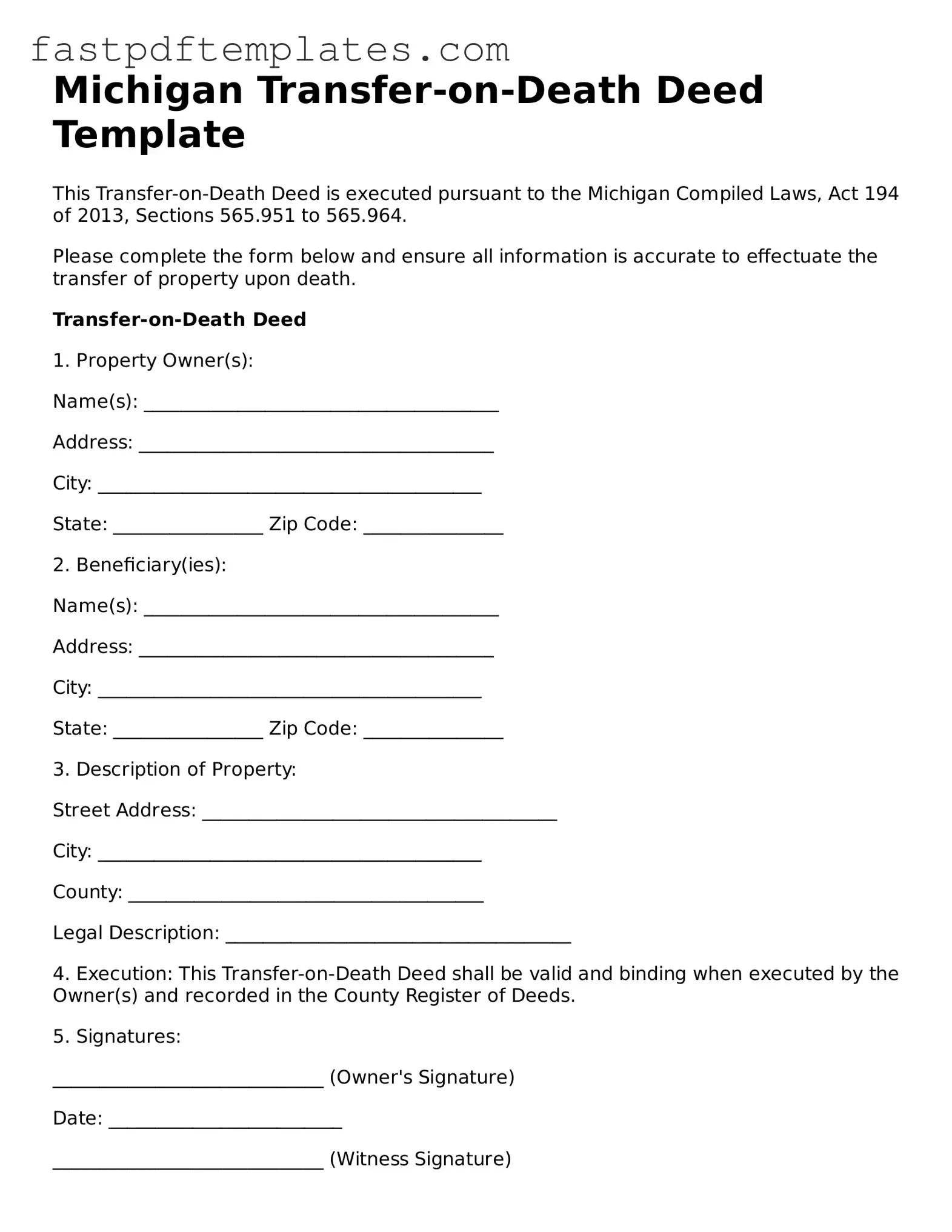Michigan Transfer-on-Death Deed Template
This Transfer-on-Death Deed is executed pursuant to the Michigan Compiled Laws, Act 194 of 2013, Sections 565.951 to 565.964.
Please complete the form below and ensure all information is accurate to effectuate the transfer of property upon death.
Transfer-on-Death Deed
1. Property Owner(s):
Name(s): ______________________________________
Address: ______________________________________
City: _________________________________________
State: ________________ Zip Code: _______________
2. Beneficiary(ies):
Name(s): ______________________________________
Address: ______________________________________
City: _________________________________________
State: ________________ Zip Code: _______________
3. Description of Property:
Street Address: ______________________________________
City: _________________________________________
County: ______________________________________
Legal Description: _____________________________________
4. Execution: This Transfer-on-Death Deed shall be valid and binding when executed by the Owner(s) and recorded in the County Register of Deeds.
5. Signatures:
_____________________________ (Owner's Signature)
Date: _________________________
_____________________________ (Witness Signature)
Date: _________________________
6. Notary Acknowledgment:
State of Michigan, County of _______________
On this ___ day of __________, 20___, before me, a Notary Public, personally appeared __________________________, who is known to me (or has provided sufficient proof of identity) and acknowledged the execution of this Transfer-on-Death Deed.
_____________________________
Notary Public
My Commission Expires: _______________
